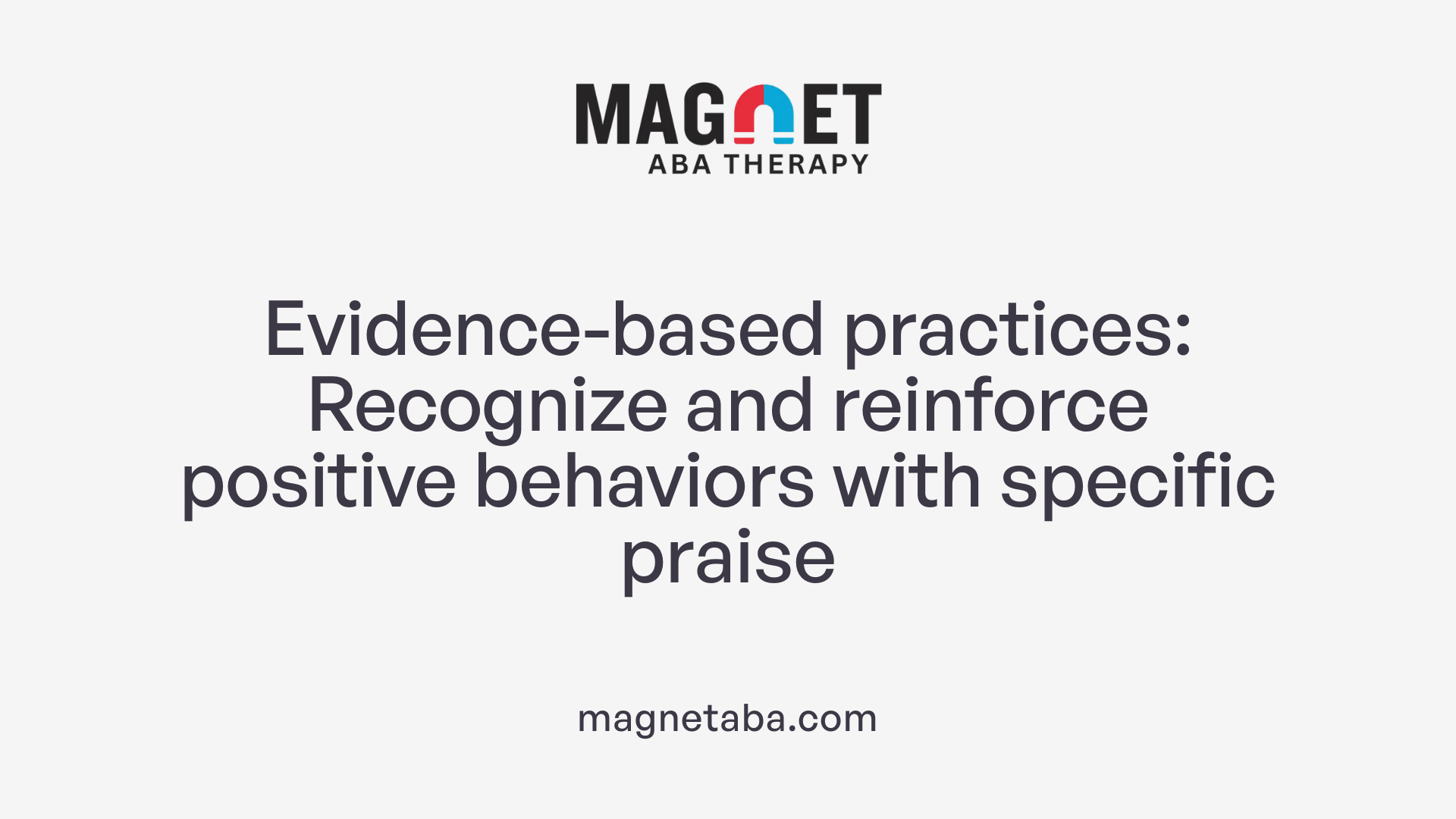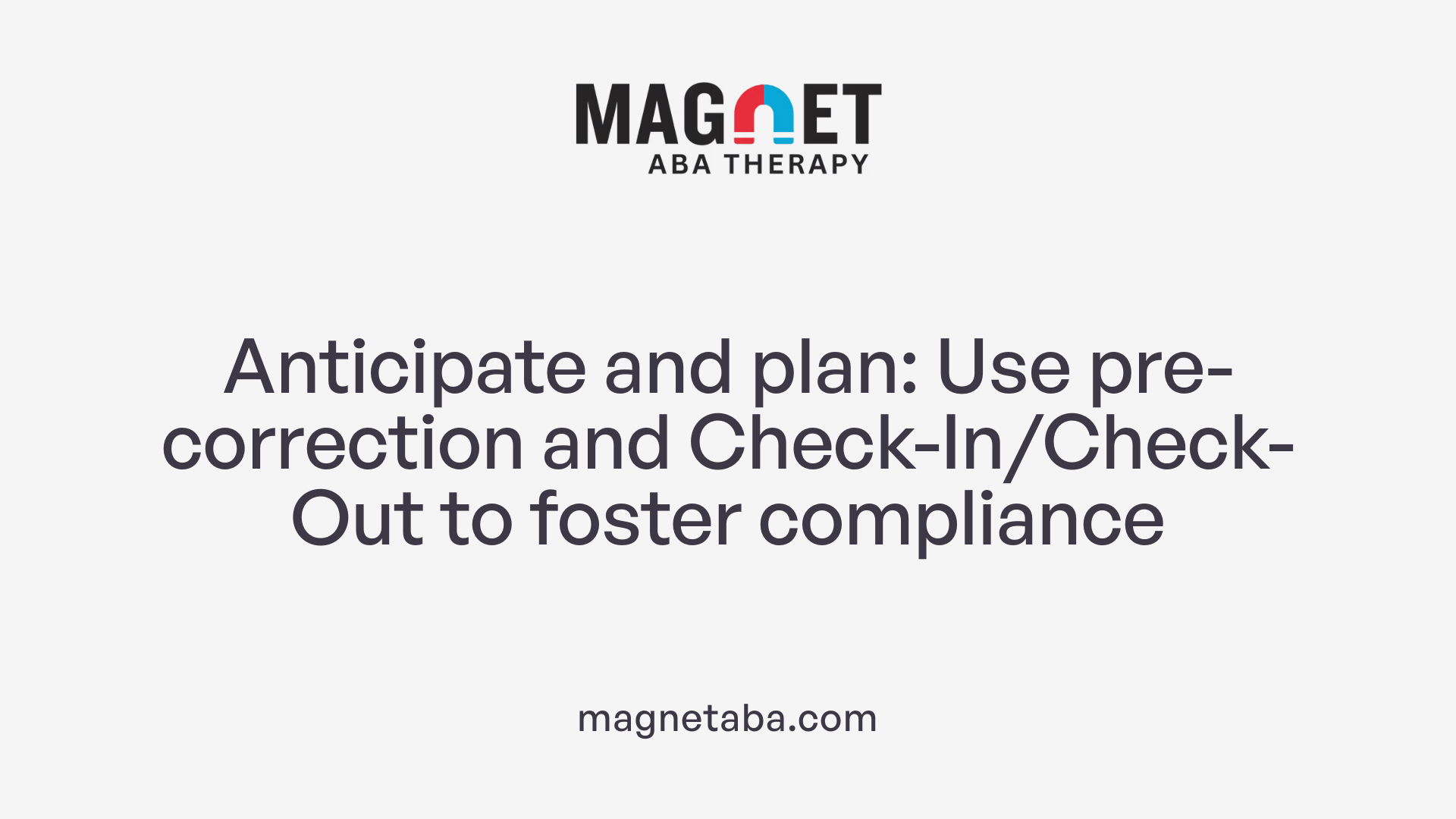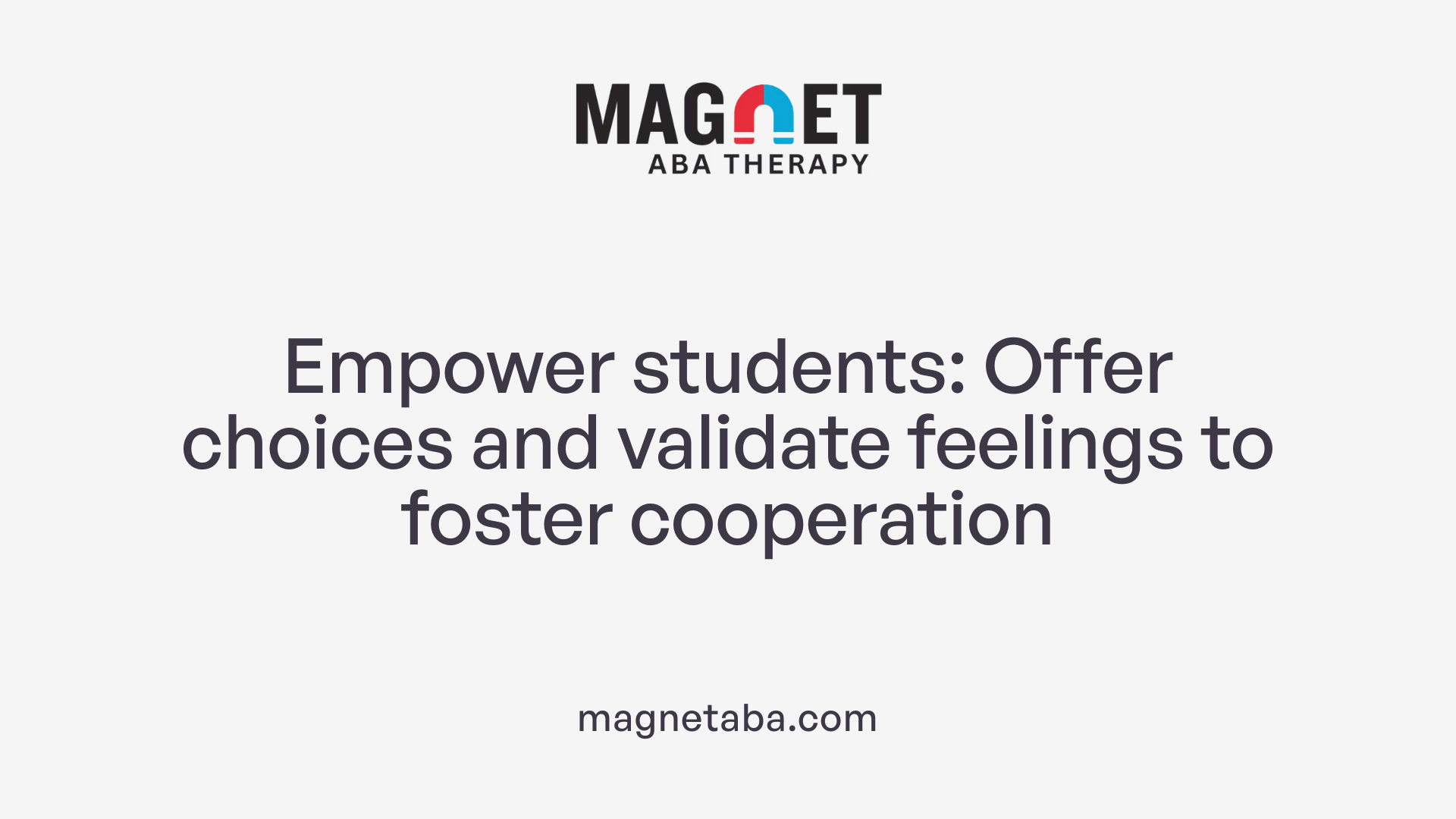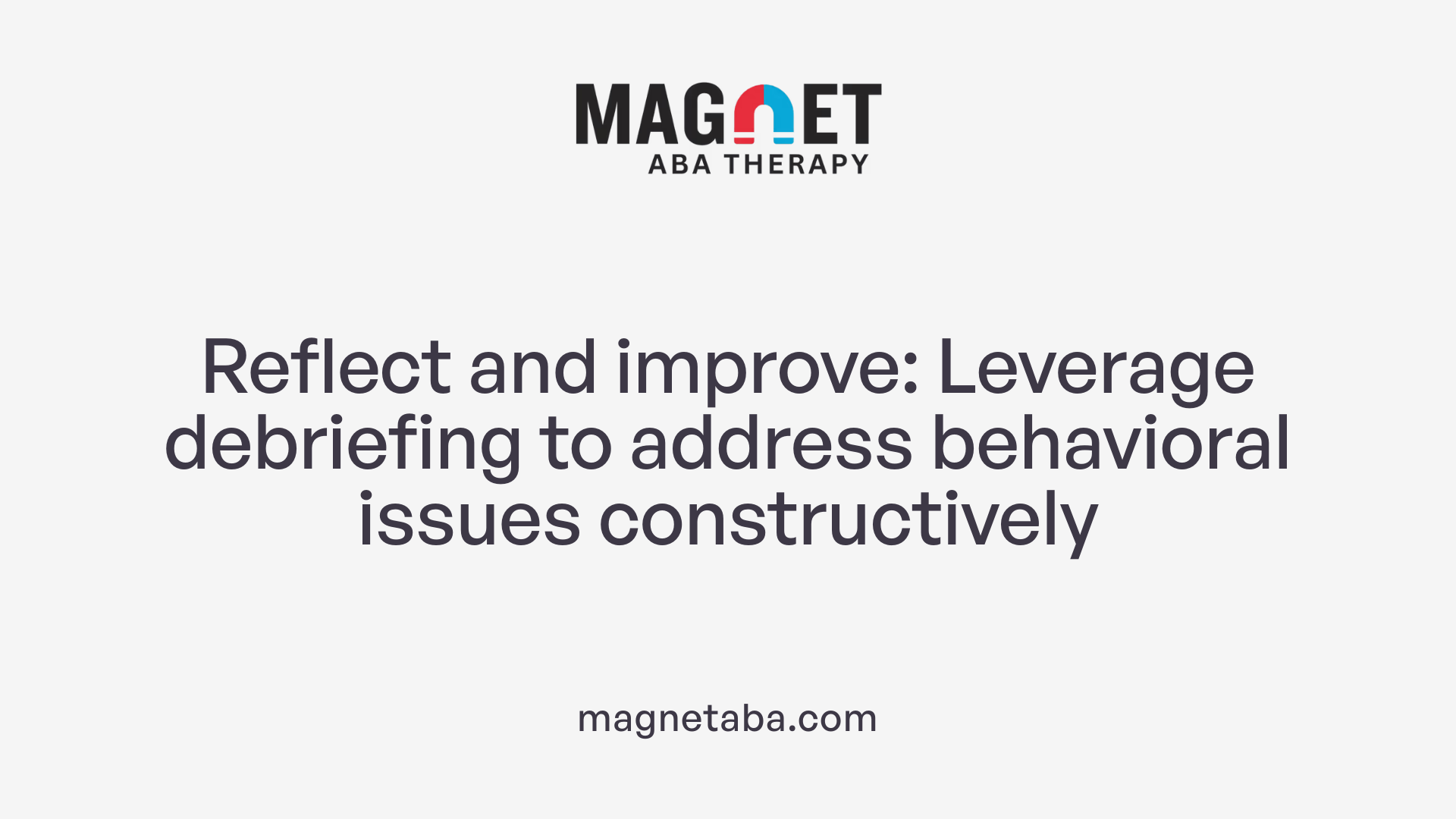Understanding Noncompliance and the Power of Positive Strategies
Noncompliance remains a significant challenge across various settings including healthcare, education, and workplaces, often leading to suboptimal outcomes and increased management costs. However, implementing positive, evidence-based strategies can effectively reduce noncompliance by fostering collaboration, motivation, and understanding among stakeholders. This article explores proven techniques rooted in behavioral science and systemic approaches aimed at promoting adherence, cooperation, and proactive engagement.
Fostering Collaborative Relationships for Better Compliance
How can fostering collaborative relationships enhance compliance and reduce noncompliance?
Building strong, cooperative relationships between all stakeholders involved in compliance processes is fundamental to successful adherence to rules and policies. When trust is established between team members, management, and external partners, individuals are more willing to share concerns, report issues, and seek guidance without fear of judgment or reprisal.
Open communication is another vital aspect. Encouraging honest dialogues allows for early identification of potential problems, clarifies expectations, and provides a platform for voicing uncertainties. This transparency helps prevent misunderstandings that often lead to noncompliance.
Mutual respect reinforces a positive environment where everyone feels valued and motivated to uphold standards. When employees see their well-being and perspectives acknowledged, they develop a sense of ownership and responsibility towards compliance protocols.
An environment of safety and inclusivity provides psychological comfort, making it easier for staff to discuss mistakes or gaps without feeling threatened. Such environments foster learning and continuous improvement, reducing the likelihood of intentional or accidental violations.
Structured communication tools, like regular meetings, feedback systems, and collaborative platforms, streamline information sharing and decision-making. These tools ensure consistency in messaging and facilitate coordinated efforts.
Moreover, engaging in activities that recognize good compliance practices, such as awards or acknowledgments, reinforces positive behaviors and encourages ongoing adherence.
In summary, fostering trust, practicing open dialogue, respecting each individual's contributions, and creating a safe, inclusive environment all work together to strengthen compliance efforts. These strategies enable proactive management of risks, making it easier to address issues before they escalate and ultimately lowering instances of noncompliance.
| Aspect | Description | Impact on Compliance |
|---|---|---|
| Building Trust | Developing reliable and honest relationships | Encourages transparency and information sharing |
| Open Communication | Facilitating honest and ongoing dialogue | Enables early issue detection |
| Mutual Respect | Valuing contributions of all stakeholders | Motivates adherence and responsibility |
| Safe & Inclusive Environment | Promoting psychological safety | Reduces fear-based noncompliance |
| Structured Communication Tools | Using formal mechanisms to share info | Ensures clarity and consistency |
A collaborative approach that emphasizes these elements creates a positive cycle where compliance becomes a shared goal, driven by mutual understanding and collective effort. Employers, managers, and compliance officers who prioritize these relationship-building strategies are better positioned to foster a culture of integrity that naturally minimizes rule violations and promotes organizational excellence.
Harnessing Positive Reinforcement to Increase Motivation

How can positive reinforcement and management techniques encourage compliance across different settings?
Positive reinforcement involves recognizing and rewarding desired behaviors to encourage their continuation. When applied consistently, these techniques can significantly improve compliance whether in classrooms, workplaces, or healthcare environments.
In educational settings, praising students when they exhibit good behavior encourages them to repeat those actions. Specific and immediate praise, such as saying
Implementing Evidence-Based Strategies in Healthcare and Education

How can adults catch a child behaving appropriately?
Recognizing and rewarding positive behaviors is a cornerstone of effective behavior management in both educational and healthcare settings. Adults should actively observe children to notice when they follow rules or demonstrate desirable conduct. When such behaviors are identified, immediate and specific praise reinforces these actions, making it more likely they will recur.
An effective approach is to use labeled praise, such as saying, “Great job completing your homework on time,” instead of vague compliments. This clear feedback directly associates the positive behavior with acknowledgment, strengthening the child's understanding.
How can adults encourage positive behaviors?
In addition to praise, adults can employ strategic attention techniques like catching the child behaving well and providing reinforcement. Using reinforcement methods such as tokens or reward systems can motivate children by giving tangible evidence of their good behavior.
Tokens can be earned for positive actions and exchanged later for preferred rewards. This system helps children associate their efforts with concrete outcomes, boosting their motivation.
What techniques can reduce negative behaviors?
To manage attention-seeking misbehaviors, adults should consider active ignoring, which involves withholding attention when inappropriate behaviors occur, provided that the child’s appropriate behaviors are acknowledged. This reduces the reinforcement for negative behaviors.
For behaviors that persist, giving clear and effective commands is crucial. Commands should be straightforward, specific, and followed by immediate reinforcement upon compliance, increasing the child’s likelihood of obedience.
How can systemic and routine strategies foster better compliance?
Simplifying routines by adjusting timing and frequency of tasks can improve cooperation. Using visual aids and adherence tools helps children understand expectations more easily.
Within healthcare, providing patients with clear, simple, and repeated instructions in everyday language ensures they understand their treatment plans. This decreases confusion and improves adherence.
How does personalized intervention enhance adherence?
Understanding individual preferences and barriers allows for tailored strategies such as addressing beliefs about susceptibility, severity, benefits, and barriers related to health behaviors. Incorporating technology—reminder apps, telehealth services—further supports this customization.
How can healthcare and education professionals build effective relationships?
Establishing a collaborative, trusting relationship involves active listening, involving children or patients in planning, and maintaining open communication. Using physical cues like touch or verbal signals can redirect behavior effectively.
Creating a positive environment by validating feelings, avoiding power struggles, and choosing battles wisely fosters cooperation. Setting clear, written expectations displayed prominently provides consistency.
What role does proactive instruction and environmental management play?
Teaching behavioral expectations through demonstrations and role-plays enhances understanding. Pre-correction—prompting before misbehavior occurs—and check-in/check-out systems during the day can improve compliance.
Controlling environmental factors such as seating arrangements and providing structured routines influence behavior positively, while acknowledging uncontrollable factors helps set realistic expectations.
How should teachers and professionals handle challenging situations?
Choosing when and how to confront or disengage from disruptive behavior is critical. Reframing questions to focus on support rather than blame, and giving permission to fail as part of learning, encourages resilience.
Understanding that testing limits is a natural part of development, especially for strong-willed individuals, can be channeled into positive growth. After behaviors subside, debriefing provides opportunities for feedback and future planning.
What instructional approaches improve compliance?
Using tiered commands—starting with easy, high-probability directions—can build behavioral momentum. Alternating between simple and challenging requests increases compliance.
Matching demands to students' abilities and providing lots of praise reduces non-compliance. Offering choices (calmly, without power struggles) helps students feel in control.
How can systemic intervention strategies be integrated?
Combining multiple approaches—behavior management, instructional methods, and environmental adjustments—within a multidisciplinary framework enhances effectiveness. Regular follow-ups and involving families support sustained change.
How can healthcare and other environments improve treatment adherence?
In medical settings, involving patients in decision-making, providing thorough education, and addressing specific barriers like complexity of medication routines or cost improve adherence. Simplified medication packaging, reminder systems, and personalized treatment plans play vital roles.
Technological aids such as mobile apps, automated reminders, and telehealth services are powerful tools to maintain engagement. Recognizing milestones and providing positive reinforcement motivate ongoing compliance.
How important is communication and relationship-building?
Open, nonjudgmental communication uncovers underlying reasons for noncompliance. Building a partnership based on understanding boosts trust and cooperation.
Implementing shared decision-making and involving support persons increase accountability. Adjusting strategies for individual circumstances, including cultural sensitivity and addressing mental health concerns, leads to better adherence and outcomes.
In sum, effective behavior and treatment adherence strategies are multifaceted. They require a combination of positive reinforcement, clear instructions, personalized interventions, strong relationships, and systemic support. The integration of technology and ongoing follow-up ensures these strategies are sustainable, leading to improved health and educational outcomes.
Addressing Underlying Causes of Noncompliance through Behavioral Strategies
What behavioral strategies address the underlying causes of noncompliance?
Effectively managing noncompliance requires a nuanced understanding of its root causes. Behavioral strategies focus on assessing these underlying factors and tailoring interventions accordingly.
First, a comprehensive assessment is essential. Identifying specific issues such as communication barriers, psychological challenges, cultural influences, external stressors, or substance dependence allows for targeted solutions. For example, if poor understanding of instructions is identified, simplifying communication or providing repeated instructions in everyday language can improve adherence.
In cases involving psychological issues like depression or anxiety, providing psychological support or counseling may be beneficial. For cultural influences, understanding and respecting individual beliefs and practices inform culturally sensitive approaches that foster cooperation.
External stressors such as financial difficulties, family problems, or environmental stress can also hinder compliance. Addressing these stressors through social services, community resources, or support systems can alleviate barriers.
Empathetic and patient-centered communication plays a pivotal role. Using open-ended questions, mirrored responses, and asking how the patient perceives their condition encourages dialogue and clarifies misunderstandings. Consistently enforcing reasonable boundaries helps establish clear expectations while maintaining respect and autonomy.
Positive reinforcement strategies are equally important. Recognizing and rewarding adherence through praise or tangible tokens can motivate continued compliance. These approaches should be combined with routine monitoring and follow-up to evaluate progress and adjust interventions.
Ultimately, the goal is to understand the individual’s unique circumstances holistically and develop strategies that address these factors directly. Doing so fosters a collaborative dynamic, empowering patients and reducing resistance to treatment.
In summary, behavioral interventions aimed at uncovering and addressing communication issues, psychological states, cultural contexts, and external stressors—coupled with empathetic engagement—are most effective in promoting sustained compliance. This comprehensive, patient-centered approach moves beyond authoritarian enforcement to cultivate cooperation, understanding, and long-term adherence.
Utilizing Effective Instructional and Pre-Correction Techniques
How can demonstrating behavioral expectations, role plays, and behavior rehearsal improve compliance?
Teaching children or students about expected behaviors through demonstrations, role plays, and behavior rehearsal provides clear, practical examples of appropriate conduct. These methods help learners visualize and practice correct actions in a safe environment, which boosts their understanding and confidence.
Role plays allow children to actively engage in simulated scenarios, helping them internalize behaviors and respond appropriately in real-life situations. This hands-on approach fosters better retention than passive listening.
Rehearsal of behaviors ensures that children have multiple opportunities to practice correct responses, making adherence to expectations more automatic over time. When these strategies are used consistently, they clarify what is expected, reducing confusion and noncompliance.
What is pre-correction and how does it prevent non-compliance?
Pre-correction is an anticipatory approach where adults predict potential non-compliance or misbehavior and remind or prompt children beforehand. By clarifying expectations before a situation arises, pre-correction reduces the likelihood of inappropriate behavior.
When combined with active supervision, pre-correction ensures children are guided along the correct behavioral path from the outset. For instance, a teacher might remind a student of classroom rules before transitioning to a new activity, preventing confusion or off-task behavior.
This proactive strategy promotes smooth transitions, fosters self-regulation, and minimizes the need for corrective discipline later.
How does active supervision enhance behavior management?
Active supervision involves adults continuously monitoring and engaging with children to reinforce positive behavior. This approach allows for immediate feedback, praise, or correction, which significantly influences compliance.
By being visibly attentive and present, adults can catch and reinforce appropriate behaviors in real time, creating a positive environment that encourages consistency.
Furthermore, active supervision helps adults recognize early signs of misbehavior, so they can implement pre-corrective measures or gentle redirection rather than reactive discipline after the fact.
This strategy not only deters problematic behaviors but also builds trust and rapport between adults and children, which supports long-term compliance.
Strategies Addressing Underlying Causes of Noncompliance
Behavioral interventions that target the deeper roots of noncompliance typically involve a thorough assessment to identify contributing factors such as communication barriers, psychological issues, cultural considerations, or external stressors.
Once these elements are understood, tailored interventions can be implemented. For example, improving clarity in communication may involve using visual aids or simplified language for children with learning differences.
Addressing cultural influences might include incorporating culturally relevant examples or norms to foster acceptance and cooperation. Psychological challenges like anxiety or trauma may require supportive counseling alongside behavioral strategies.
Addressing external factors such as stress, health issues, or substance dependence can also reduce noncompliance by alleviating external pressures.
Empathetic and patient-centered communication techniques—like asking open-ended questions, mirroring responses, and actively listening—help uncover the child’s or patient’s concerns or misunderstandings.
Consistent enforcement of clear boundaries, married with positive reinforcement, encourages compliant behavior while respecting individual autonomy and circumstances.
By adopting a holistic approach that explores and mitigates the various causes of noncompliance, adults can foster a supportive environment that promotes cooperation and positive growth.
Proactive Strategies: Pre-correction and Check-In/Check-Out

How can anticipating noncompliance improve behavior management?
Anticipating noncompliance involves teachers and caregivers thinking ahead about potential challenges and proactively addressing them before they occur. By recognizing situations likely to trigger misbehavior, adults can plan strategies such as pre-correction, which involves reminding or prompting children about expected behaviors in advance.
Pre-correction helps set clear expectations, reduces uncertainty, and prevents problem behaviors. When combined with active supervision, it creates an environment where children are more aware of what is expected, thereby increasing the chances of compliance.
How do prompting behavioral expectations and providing feedback work?
Prompting behavioral expectations includes giving verbal cues, visual reminders, or physical signals to guide children toward appropriate actions. For example, teachers might use visual charts or verbal reminders before transitioning between activities.
Following up with immediate and specific feedback reinforces positive behaviors and clarifies what was done well or what needs improvement. Encouragement, praise, and constructive comments motivate children to repeat desirable behaviors.
What is the role of Check-In/Check-Out (CICO) systems?
The Check-In/Check-Out (CICO) approach involves students rating their own behavior at designated times during the day, often with a teacher or staff member providing ongoing feedback. During check-in, students review their goals and receive encouragement. At check-out, they evaluate their progress and set goals for the next session.
CICO is especially effective during the early stages of behavior modification programs, notably with middle school students. It fosters accountability, boosts self-awareness, and can improve compliance by reinforcing positive behaviors through regular monitoring and feedback.
Combining strategies for better compliance
Implementing pre-correction and CICO together creates a comprehensive support system. Pre-correction prepares students for expected behaviors, reducing instances of noncompliance. CICO then maintains momentum with consistent feedback and encouragement.
Both strategies align with establishing a predictable, supportive environment that promotes positive behavior, minimizes power struggles, and encourages student ownership.
| Strategy | Purpose | How it Works | Best Suited For |
|---|---|---|---|
| Pre-correction | Prevents noncompliance | Reminds or prompts expectations before activity or situation | Classroom transitions, routines |
| Active supervision | Immediate oversight | Monitoring and guiding behavior in real-time | All settings |
| Prompting behavioral expectations | Clarifies desired actions | Visual or verbal cues before tasks | Transition periods |
| Feedback and encouragement | Reinforces positive behavior | Immediate praise, specific comments | Throughout daily activities |
| Check-In/Check-Out (CICO) | Promotes self-monitoring and accountability | Students rate behavior, receive feedback during the day | Middle school settings, behavioral programs |
What behavioral strategies address the underlying causes of noncompliance?
Behavioral strategies that address the underlying causes of noncompliance involve comprehensive assessment to identify factors such as communication barriers, psychological issues, cultural influences, secondary gains, psychosocial stressors, and substance dependence. Interventions are then tailored to the specific cause, such as improving clarity of communication, exploring cultural considerations, providing psychological support, or addressing external stressors.
Using empathetic, patient-centered communication techniques—like asking questions to ensure understanding and avoiding power struggles—helps foster cooperation and clarify expectations. Consistent enforcement of reasonable and clear boundaries, along with positive reinforcement for compliance, encourages adherence while respecting patient autonomy.
Ultimately, the goal is to understand and address contributing factors holistically, rather than solely enforcing compliance through authoritative measures.
Combining Instructional Approaches with Behavioral Preparedness
How do teaching behavioral expectations, demonstrations, explanations, role plays, and behavior rehearsal contribute to reducing noncompliance?
Teaching behavioral expectations is foundational in establishing clear and consistent standards for appropriate behavior. By explicitly demonstrating what is expected through visual or physical examples, educators and practitioners create a concrete understanding that can be easily followed.
Role plays and behavior rehearsals serve as active learning strategies. They allow individuals to practice desired behaviors in controlled settings, making the transition to real-life application smoother. For example, students can simulate asking for help or following instructions, reinforcing correct responses.
Explanations complement these methods by providing reasoning behind behavioral rules, which enhances motivation and understanding. Clear, simple, and concise explanations help learners see the relevance and importance of adhering to expectations.
These instructional strategies work synergistically to increase compliance by establishing a structured learning environment. They foster confidence, reduce anxiety, and prepare individuals to respond appropriately in varied situations.
What behavioral strategies address the underlying causes of noncompliance?
To effectively address noncompliance, it’s essential to understand and target its underlying drivers. Behavioral strategies that focus on root causes involve comprehensive assessment to identify specific factors such as communication barriers, psychological issues, cultural influences, and external stressors.
Interventions are then customized; for instance, improving clarity of communication and providing patient-centered explanations help reduce misunderstanding and frustration. Exploring cultural considerations ensures respect and relevance, increasing cooperation.
Addressing psychological issues may involve providing emotional support or counseling, while managing external stressors or environmental factors can eliminate triggers for noncompliance. Recognizing issues like substance dependence is also crucial.
Practitioners employ empathetic, nonjudgmental communication—asking open-ended questions, mirroring concerns, and validating feelings—to uncover underlying causes. This approach fosters trust and reveals specific barriers.
Consistent enforcement of clear, reasonable boundaries paired with positive reinforcement for compliance guides behaviors effectively. These measures promote adherence while respecting individual autonomy.
The overarching goal is a holistic understanding of the person’s context, enabling tailored strategies that address factors contributing to noncompliance rather than merely enforcing compliance through authoritarian measures. Such patient-centered methods improve long-term adherence and overall outcomes.
Supporting Student Autonomy to Reduce Power Struggles and Resistance

How can offering choices reduce resistance and improve compliance?
Providing students with choices empowers them and fosters a sense of control over their actions. For example, allowing students to pick between two acceptable tasks or set the order in which they complete activities encourages cooperation. This approach shifts focus from authority to partnership, making students more willing to engage and follow through.
Why should educators avoid making everything non-negotiable?
Overly strict or non-negotiable rules can lead to power struggles and defiance. Instead, setting clear boundaries with some flexibility helps maintain order while respecting students’ individuality. Teachers can prioritize certain rules essential for safety and learning, while making other behaviors negotiable or subject to discussion.
How does testing limits fit into student development?
Testing limits is a natural part of growth, especially for strong-willed students. When managed appropriately, it provides opportunities for students to learn self-regulation and resilience. Teachers and caregivers should set developmental appropriate limits, calmly reinforce boundaries, and use these moments to teach decision-making and responsibility.
In what ways can reframing questions help reduce resistance?
Reframing questions shifts the focus from blame or authority to support and understanding. Asking, “What can I do to help?” or “Is that what you meant to do?” demonstrates empathy and invites cooperation.
How does validating students’ feelings contribute to compliance?
Acknowledging emotions like frustration or unfairness helps build trust and decreases resistance. Validated feelings create a safe space for students, making them more receptive to guidance. For instance, saying, “I understand you’re upset; let’s work through this together,” shows empathy and opens dialogue.
What strategies involve understanding and addressing underlying causes of noncompliance?
Behavioral strategies that address the root causes include comprehensive assessments to identify factors such as communication barriers, psychological issues, or cultural influences. Tailoring interventions to specific needs—like improving clarity, exploring cultural considerations, or providing psychological support—can enhance cooperation.
Using empathetic, patient-centered communication is vital. Asking open-ended questions ensures understanding, while avoiding power struggles prevents escalation. Consistency in enforcement of clear, reasonable boundaries paired with positive reinforcement encourages compliance.
Ultimately, these approaches aim to understand and address the contributing factors holistically, fostering a respectful and collaborative environment that promotes student growth and cooperation.
The Role of Debriefing and Behavior Management in Reducing Noncompliance

How can debriefing serve as a positive strategy to address behavioral issues?
Debriefing is a supportive, constructive approach that takes place after a misbehavior or noncompliance incident. Instead of focusing on punishment, it centers on understanding what happened, discussing feelings involved, and guiding the student or patient toward better choices in the future.
This method helps create a safe space for reflection, allowing individuals to recognize the consequences of their actions and learn from the experience. When used effectively, debriefing can decrease the likelihood of repeated noncompliance and promote personal growth.
Why is providing feedback and future planning important?
Feedback during debriefing offers clear, specific information about what behaviors were appropriate and what could be improved. It’s essential that feedback is delivered in a calm, non-judgmental manner, emphasizing learning rather than punishment.
In addition, future planning involves collaboratively developing strategies to handle similar situations better next time. This might include role-playing, setting new goals, or agreeing on specific behavior expectations. Together, feedback and planning reinforce positive behaviors and skills.
When is the ideal time to conduct debriefing?
Timing is crucial. Debriefing should occur once the individual has calmed down enough to engage constructively—immediately after the incident or shortly thereafter. Engaging too early, during heightened emotional states, can escalate tensions.
Waiting until after the situation has subsided ensures the participant is receptive to discussion and reflection. This approach helps prevent the escalation of behavioral issues and supports a calm, productive dialogue.
How can debriefing help avoid escalation?
Debriefing promotes understanding and cooperation. It focuses on problem-solving rather than blame, which reduces defensiveness and resistance.
Using respectful language, validation of feelings, and active listening makes participants more willing to collaborate. When individuals feel heard and supported, they are less likely to react defensively or escalate their behaviors.
In sum, debriefing is a powerful tool in behavior management, helping break the cycle of noncompliance, fostering trust, and encouraging ongoing positive change.
| Strategy | Description | Benefits |
|---|---|---|
| Positive Debriefing | Post-incident reflection focusing on learning | Reduces repeat noncompliance, builds trust |
| Timely Feedback | Providing specific feedback when calm | Enhances understanding and motivation |
| Future Planning | Collaboratively setting goals and strategies | Promotes accountability and positive habits |
| Avoiding Escalation | Engaging after emotions subside, respectful approach | Prevents conflicts, encourages cooperation |
Engaging students or patients in shared decision-making and offering empathetic, nonjudgmental feedback during debriefing sessions can significantly improve long-term compliance and behavior modification.
Building a Culture of Compliance through Positive Strategies
Implementing positive, evidence-based strategies for reducing noncompliance fosters a supportive environment where stakeholders feel valued and motivated to adhere to behavioral expectations. By emphasizing collaboration, employing reinforcement techniques, addressing underlying causes, and utilizing proactive interventions, organizations can significantly enhance adherence. Combining systemic support with individual-centered approaches, including effective communication, tailored interventions, and structured reinforcement, creates a resilient culture of compliance that benefits everyone involved. Continuous evaluation and adjustment of these strategies ensure sustained success, making compliance an achievable goal rooted in positive relationships and shared responsibility.
References
- 6 Strategies for Increasing Children's Positive Behaviors
- Strategies to Enhance Patient Adherence: Making it Simple
- Encouraging Compliance and Managing Non- ...
- specific strategies to deal with non-compliance - a ...
- Effective Strategies for Managing Non-Compliant Patients ...
- Strategies for Enhancing Patient Compliance
- Working with the Noncompliant Patient - PMC
- Medication Adherence and Compliance: Recipe for ...
- Overcoming barriers to patient adherence - PubMed Central
- Strategies for Enhancing Patient Compliance












